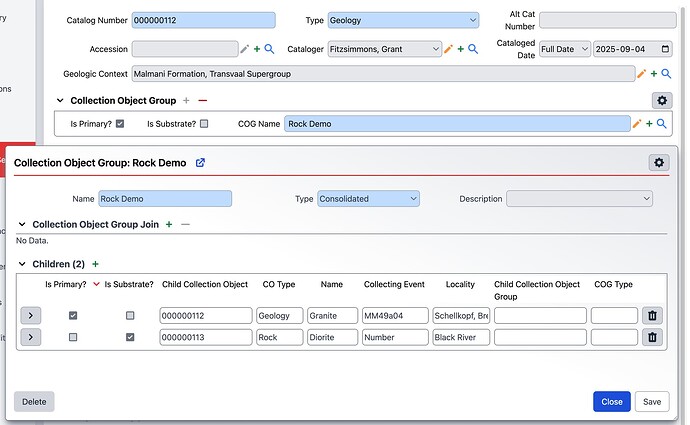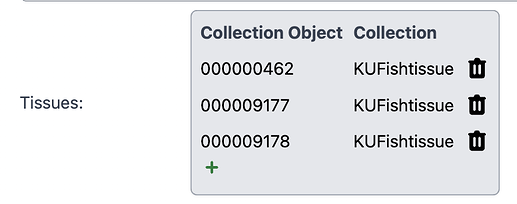Hello @Danae,
Thank you for reaching out and welcome to Specify! That’s an excellent question, and there are a couple of great ways to model this relationship in Specify.
Within A Single Collection
For most situations, the most straightforward approach is to manage everything within a single collection using a combination of Collection Object Types and Collection Object Groups (COGs).
This method is designed for exactly this kind of situation, where you have multiple discrete items (the bones) that originate from a single source (the pellet).
Here’s how it would work in practice:
- Define Your Object Types: First, create two Collection Object Types: “Pellet” and “Bone”. This helps categorize your records for searching and data entry.
- Group the Objects: Create a single Collection Object record for the pellet itself, where you can store all of its unique data. Then, use a Collection Object Group (COG) to link that one pellet record to all the individual bone records derived from it.
It would look like this on the data entry form:
You can click the (pencil) icon to open a dialog to see the other items in the group:
With Two Separate Collections
If the pellets and bones have very different data management needs, another powerful option is to manage the vertebrate bones in an entirely separate collection.
You could add a new “Vertebrate Bones” collection to your database and then use Specify’s Collection Relationship system to link it to your original collection containing the pellets.
What this would look like:
You would configure a formal relationship where the pellet collection is the “Source” and the bone collection is the “Destination.” On the data entry form for each bone, you would have a field to look up and link it back to the specific pellet record it came from in the other collection. This creates a clear, one-to-many link between the two distinct datasets.
It would look like this on your data entry form:
Bird (Left/Source):
Bones (Right/Destination):

Note that you can use a Collection Relationship within the same collection if that is desired as well. While keeping everything in one collection is often simpler, the two-collection approach offers more administrative separation if your workflow requires it.
I hope this helps!
Best,
Bhumika


